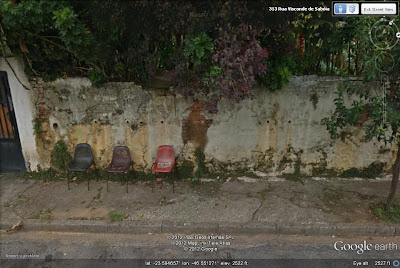Morgan Hill Overlook,
Noxubee National Wildlife Refuge
5 October 2012
We got out there early enough to see the dew on the spiderwebs. Lots of sneezeweed, (Helenium tenuifolium) and purple gerardia (Gerardia purpurea).
I think this is Seteria spp. being all lit up by the sun. Wouldn't this look good in the home landscape?
Yeah I probably am allergic to it but I don't care.
Bluff Lake,
Noxubee National Wildlife Refuge
10 October 2012
Aggilater.
Dam.
Scattertown Trail, Noxubee National Wildlife Refuge
20 October 2012
This is a 1.75 mile loop trail of upland hardwood forests. Lots of Vaccinium and Callicarpa. Also, mockernut hickory and shortleaf pine. The trail follows a series of ridges on three sides of a ravine that holds a little creek, a lot of cut banks, and switch cane.
Uplands near the trail head. October is much like spring, dappled light through a sparse top canopy creates opportunities for little wildflower surprises here and there. Also the light coming in at different, lower angles and changing foliar colors allow designers to consider possibilities regarding mixing overstory, midstory, shrub level, and ground level plants.
Interesting tree.
The same tree in February 2011.
 |
| A small Solidago right at about the halfway point. |
Odd fungi can be found just about any time in the NWR. Here we have placed a rodent skull next to one for a rather macabre tableaux.
Below the Bluff Lake Spillway, Noxubee National Wildlife Refuge, 28 October, 2012
A tall pine.
The water level was low today, making walking easier. Deciding which way to go, however, is always a challenge.
A nice big possumhaw holly (Ilex decidua) in the floodplain.
A little garden inside an old stump island. This might have been a vaccinium, but I didn't get close enough to tell. I thought it might also be an escaped nandina.
At about the spot where the man-made canal joins another small creek, we came upon a broad plain with a large number of very large swamp chestnut oaks. We also found some sandbars in the stream with a good variety of animal tracks. Deer and raccoon are easy to identify, but there were other tracks as well, possibly bobcat. I want to come back with the Garmin and mark some wayoints. This was our first time down this way and, in terms of things to see, this no-trail meander is just as good as Beaverdam Trail, which it kind of parallels.
Tombigbee National Forest 18 October 2012
I have recently begun to explore the Tombigbee National Forest between Sturgis and Lousiville in Northern Winston County. I have been to Choctaw Lake many times over the years, and when I went online to investigate the numerous hiking and biking trails nearby, I came across one of the worst maps I have ever seen.
With all due respect to the National Forest Service (and I do respect them a great deal), this map is kind of a mess. The trail index uses numbers, but I don't see numbered trails in the map image. I see trails with letters next to them, but I don't see any letters in the index or the legend. The numbers for forest service roads are helpful for driving around, but the fact that trails are red lines in the map image and roads can be either red or black lines does not help. Also, I am generally confused about how the two context maps relate to the main map. The smaller context map refers to a box in the larger context map that is way out of place, as in, not even within the TNF boundary. I have a long-term goal to create a better map of these trails. An internet search of "Tombigbee National Forest Trails" leads to some websites that offer trail maps for purchase. I haven't seen any of them, and I wonder if there is any profit in it for me to lay out my own using a hand-drawn tracing of a Garmin GPS track on top of a USGS quad map. The link to the USFS map, along with other USFS Mississippi trail maps, is here.
From what I have seen, this is mostly a pine-oak or oak upland forest on rolling topography. The creek bottoms don't have the oak-hickory-cypress forest characteristic of the NWR. Instead we have incised streams with beech, some magnolia, and plenty of oakleaf hydrangea. We also see a lot more dogwood (Cornus florida) in this forest than in the NWR. On Sheep Ranch Trail I saw maybe the largest dogwood I have ever seen in Mississippi (maybe 30' tall, 10" diameter breast height).
Our first trip to the Tombigbee National Forest was on September 9. We walked down Three Bridges Trail, which seems to be laid out with mountain bicycles in mind. Here are some pictures from that walk.
Euonymous americana, Hearts A Bustin. Saw it very often back home in NC, not so much here.
Incised stream.
Oakleaf hydrangea on the streambank.
Driving into Louisville for some gasoline, saw a coyote running around an old factory parking lot.
Our second trip to the Tombigbee National Forest was on 18 October. We returned to Three Bridges Trail. The rain held off until we were a good ways into the woods. It did not rain very hard, but hard enough to turn us back. I snapped a few pictures.
If you want fall foliage in Mississippi, a power cut may be your best bet.
An incised stream with a choice of bridges.
A small dogwood adds a subtle color touch to the midstory canopy.
Yep, October is a great month to get out of the house and into the woods and fields....and so is November. And all the other months.






















.JPG)
.JPG)


































